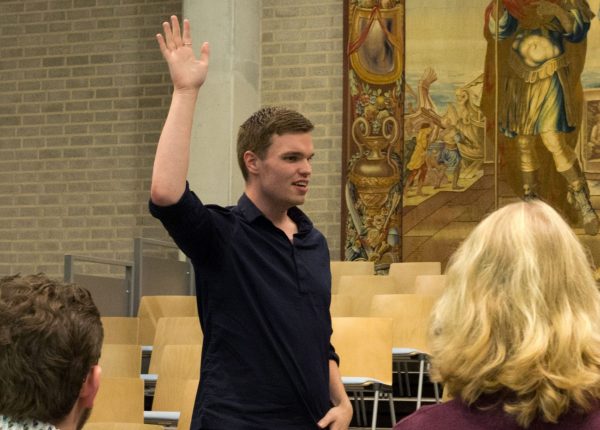

Young people are expected to have a social media presence nowadays but there are little classes offered in school that teach you how to handle social media. Under Pressure aims to help young people navigate the social media spheres. Robin Temmink is a peer educator for the program in the Netherlands and has described his experiences down below.
My name is Robin Temmink and I am a 27 year old Peer Educator for Under Pressure in the Netherlands. For a year and a half, I’ve been talking to young people about themes like free press, freedom of expression and social media. In my experience, these themes do not often get introduced to young people, as it is assumed that they find politics boring and that their social media accounts are started without a second thought. It is expected that young people figure these things out by themselves, but how?
As a peer educator, we visit classrooms of teenagers in pairs to discuss themes with them that some of them may not have considered before. A lot of students claim not to follow much of the news. They are not yet of a voting age, so why would they need to know about the importance of free press for democracy? Our answer tot hem is: we would like them to consider the things they take for granted. Most young people are on social media where news is shared by their friends. Though they are not yet voting in elections, they will be in just a few years. We would like to not only leave them with a basic understanding of press and social media, but also to motivate them to actively and critically participate in both traditional and digital media.
We try to do this by meeting them in their world. All of our peer educators are young people with a special interest in the Under Pressure themes. Our method is peppered with videos and we use an interactive game to teach about the mechanics of fake news. We ask the classroom questions about their usage of social media. We try not to talk at them, but with them. Are they aware of how social media work? What are the large tech companies, such as Facebook and TikTok, trying to achieve? And how do they hope to achieve their goals? Ask yourself, can you answer these questions?
During these conversations with students a lot of themes come up. And to me, that’s the best part of the job. What gets students excited? In a classroom, you can see their excitement through a physical reaction: They sit up and answer rapidly. In online lessons, they use their webcams and the chat function of our online classroom to share their points of view. When the chat messages follow each other very quickly, we know we’ve asked them the right question. They go on and on about interests that they don’t get to talk about often. To me, that is the most satisfying part of the job. We get to take themes that are not often considered to be of interest to them and connect them to what does excite them. We cannot teach all the workings of democracy, press and social media in a 3 hour-long lesson. We can, however, get them to start asking the right questions. We try to make them aware of how social media functions and why. Sometimes that means explaining the absolute basics. At other times that means having heated discussions about specific cases connected to the subjects of under pressure. Every classroom we leave after our final lesson has hopefully advanced in their level of understanding. That’s the goal I try to achieve as a peer educator. And it’s the reason I do it with joy.
Author: Robin Temmink